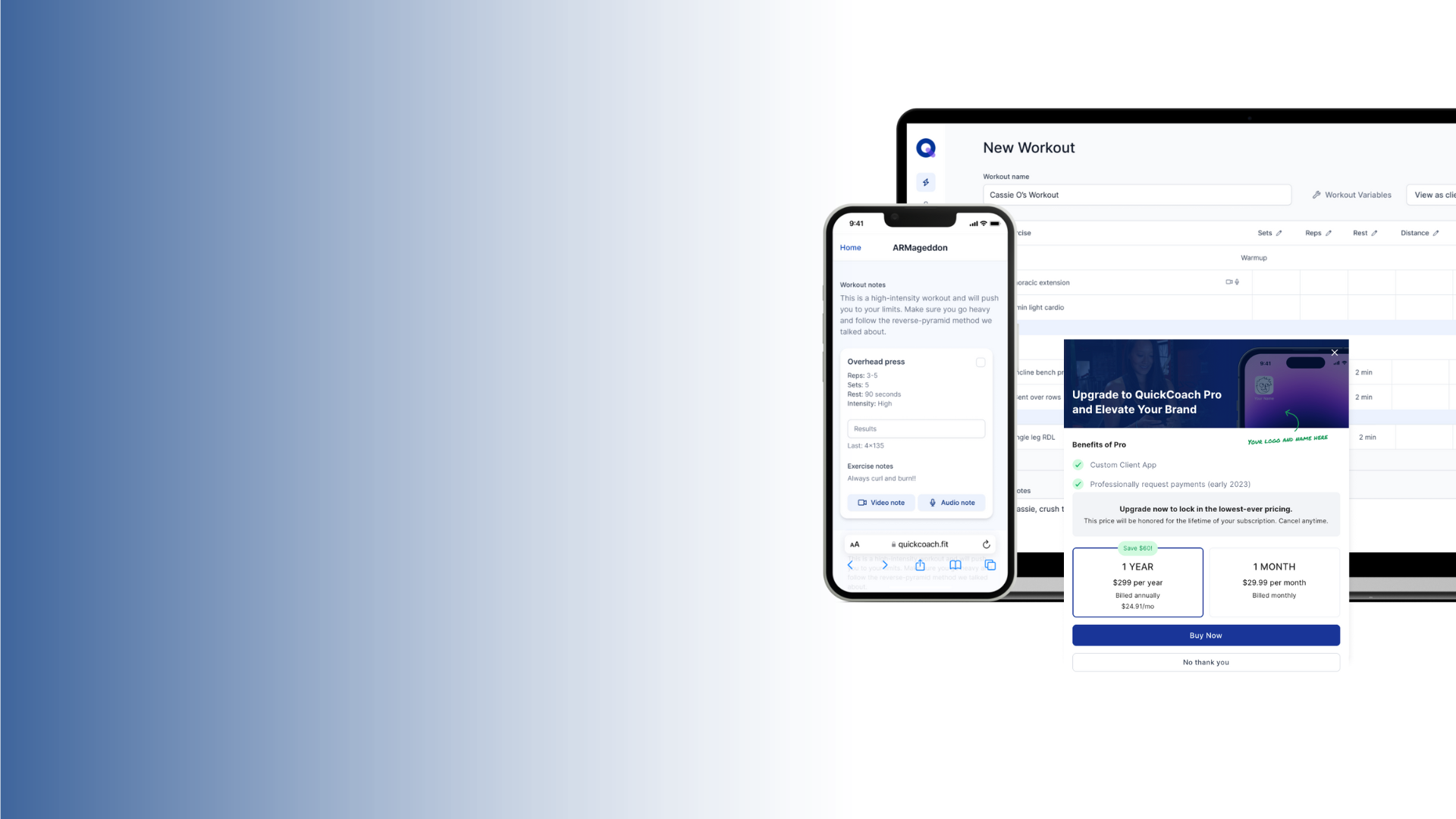
0 to 1: Discovering New Opportunities
The client needed to develop new products to complement the core offering and grow the business. Fast
The first challenge to business building is finding and understanding a problem worth solving, and I orchestrated a special project to explore a space where the company might innovate
Venture Lifecycle Stage. Discover.
Approach. After several experiences using popular mobile and web applications fitness professionals relied on to create client programs, the leader of what would become known as QuickCoach felt frustrated and curious. The apps were bloated with features, difficult to navigate and expensive, raising the question of whether there were innovation opportunities in the space.
There was a sense of urgency behind the project because we had picked up on weak but intensifying signals of softening in the core business.
To explore these questions, we executed a series of two-week design sprints, each following the same four steps. This effort emphasized learning by building artifacts shared with three to six target users and obtaining feedback via observation, interactive dialog and interviews. The sprints moved organically from seeking out user pains and problems to creating a prioritized list of solution principles.
Results. After six two-week sprints, the team found compelling evidence of demand for a new workout programming solution. The opportunity was not to make a better version of existing platforms. While we obtained evidence of useability shortcomings with incumbent apps and websites, we also learned that users of these products appeared willing to jump through hoops to get the app functionality they sought and to master the applications’ complexity.
We saw an attractive opportunity among non-users of these platforms—individuals currently using a combination of pen and paper, Excel and Google Sheets, plus email, texting and video to hack together their own bespoke solutions. These non-users far outnumbered the platform customers. Our solution principles led to a product blueprint describing a mobile-friendly web app with a shortlist of critical features that emphasized ease of use: QuickCoach.
Initial waitlist sign-ups exceeding 10,000 individuals provided further evidence we were on the right track, and QuickCoach continues to grow today.
Examples of additional Discover-stage projects I have worked on include Convu, FinMason, and IBM “Good Enough Mail” (a fascinating example of how hard it can be for large, incumbent organizations to build lower-margin, “lower-quality,” high-growth products). I apply the same iterative learning process used in these cases daily to solve problems and pursue opportunities at Build- and Scale-stage businesses.

